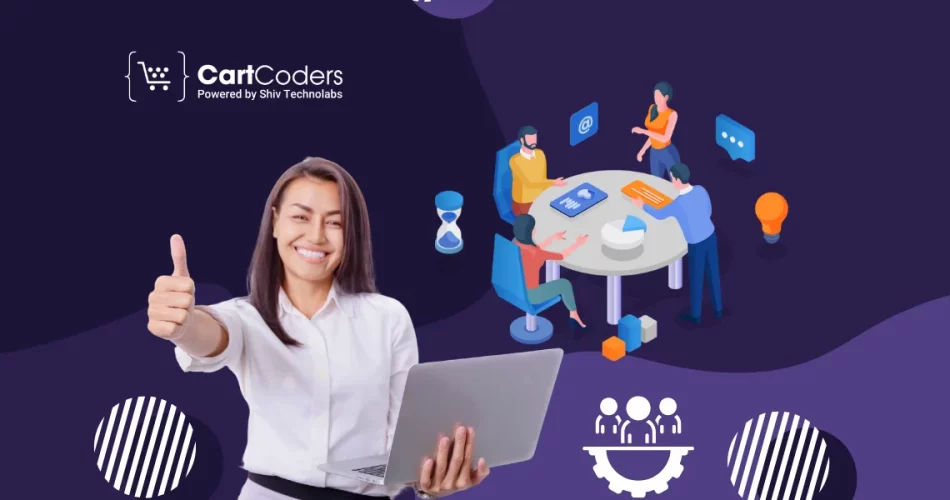Custom Engagement Solutions
Unlock tailored solutions with a free, no-obligation strategy session.
Expert Developers & Engineers on Demand
Scale Your Team with Skilled IT Professionals
Expert Guidance for Digital Transformation

IT staff augmentation means adding skilled tech professionals to your team on a temporary or project basis. These experts work as part of your internal team but remain employed by an external service provider. You control their tasks, while the provider handles recruitment, payroll, and admin work.
In 2025, companies across industries are turning to this model to fill tech skill gaps quickly and cost-effectively.
Whether you need mobile app developers, DevOps engineers, or cloud specialists, staff augmentation helps meet project goals without long-term hiring.
Traditional hiring often takes months and includes recruitment, onboarding, and benefits. In contrast, IT staff augmentation allows you to hire experts within days. Here’s why more companies prefer this model:

In this model, the external developers or engineers work at your office. They join your team physically and collaborate directly with internal staff. Though they are not your employees, they follow your process, tools, and timelines.
This model gives you strong control and makes team integration easier.
You may prefer onsite IT augmentation in the following scenarios:
Here’s a clear breakdown:
| Advantage | Description |
| Full oversight | You can supervise work and progress daily |
| Fast communication | Real-time discussions reduce delays |
| Easy team bonding | In-person work builds stronger connections |
| Drawback | Description |
| Higher cost | Office space, travel, and other expenses add up |
| Limited reach | You’re bound by local talent availability |
| Inflexible scaling | Not ideal for fast scaling or remote-first teams |
Example: A fintech firm developing a payment gateway needed PCI-compliant code review. It hired two onsite security specialists for four months. This gave their team peace of mind during audit prep without hiring permanent staff.
Industries using this model:
In offshore augmentation, the professionals work from another country—often in a different time zone. They connect remotely and are managed by your in-house leads or project managers.
This is one of the most common models because of its lower cost and scalability.
Offshore models help businesses grow faster by giving access to a wider talent pool. Here’s what makes it work:
While it’s cost-effective, offshore augmentation brings some challenges:
How to fix it:
Example Use Case
Example: A US-based SaaS company hired a team of 5 backend developers from India. They managed the team through weekly stand-ups and Jira. The result was a 30% faster product launch and a 50% lower development cost.

Nearshore staff augmentation refers to hiring developers or IT professionals from nearby countries—those in similar or slightly overlapping time zones.
Unlike offshore, nearshore teams are easier to reach during your business hours. This model gives you access to skilled talent while keeping collaboration simple.
Nearshore works best when:
| Pros | Description |
| Better communication | Time zones and language gaps are minimal |
| Strong collaboration | Easy to run daily meetings and reviews |
| Faster onboarding | Easier to align on work culture and tools |
| Cons | Description |
| Costlier than offshore | Rates are higher than offshore teams |
| Limited options | Smaller talent pool compared to offshore |
Real-World Example
Example: A UK-based real estate startup hired frontend developers from Portugal. Thanks to the similar time zone, daily syncs were smooth. The team completed a large-scale property listing dashboard in under three months.
This model helped the startup cut hiring time and maintain project speed without the timezone lag.
The hybrid model combines onsite staff with remote developers—either offshore or nearshore. Some key roles (like project leads or architects) work in your office, while the rest of the team works remotely.
It’s ideal for companies that need both direct oversight and flexible talent access.
Use this model when:
Example team split:
Example: A healthcare SaaS company in Dubai built a patient appointment system using a hybrid team:
This hybrid model gave them speed, quality, and control—without expanding the full-time team.
| Model | Best For | Cost | Time Zone Fit | Control Level |
| Onsite | Local oversight and in-person work | High | Perfect | High |
| Offshore | Budget-friendly global hiring | Low | Low | Medium |
| Nearshore | Real-time remote collaboration | Medium | Good | Medium |
| Hybrid | Large, long-term tech projects | Varies | Mixed | High |
Choosing between onsite, offshore, nearshore, or hybrid staff augmentation depends on your project needs, team structure, and budget. Each model has its own strengths. What works for a startup may not work for a fast-scaling enterprise.
Let’s walk through the key factors that help you pick the right model.
Start by asking these simple but important questions:
Your answers to these questions will narrow down the best model.
| Factor | Onsite | Offshore | Nearshore | Hybrid |
| Hiring speed | Slow | Fast | Fast | Moderate |
| Cost | High | Low | Medium | Balanced |
| Team control | High | Medium | Medium | High |
| Time zone fit | Perfect | Poor | Good | Mixed |
| Collaboration ease | High | Low | High | High |
1. Startups
2. SMBs with local teams
3. Enterprises or MNCs
Avoid these mistakes while choosing a model:
At CartCoders, we offer flexible IT staff augmentation services tailored to your specific needs. Whether you want a small offshore team or a full hybrid setup, we help you build the right model from day one.
Why CartCoders?
Need help choosing the right staffing model?
Let’s schedule a quick call and walk through your project requirements.
Staff augmentation isn’t just a hiring model. It’s a growth strategy. Whether you want cost savings, control, or both, one of these four models can match your goals.
Summary:
Once you’ve made your choice, focus on onboarding, tracking, and keeping your team aligned.
Success lies not just in the model you choose—but in how you manage it.
Projects delivered in 15+ industries.
95% retention rate, building lasting partnerships.
Serving clients across 25+ countries.
60+ pros | 10+ years of experience.